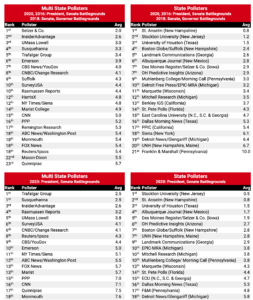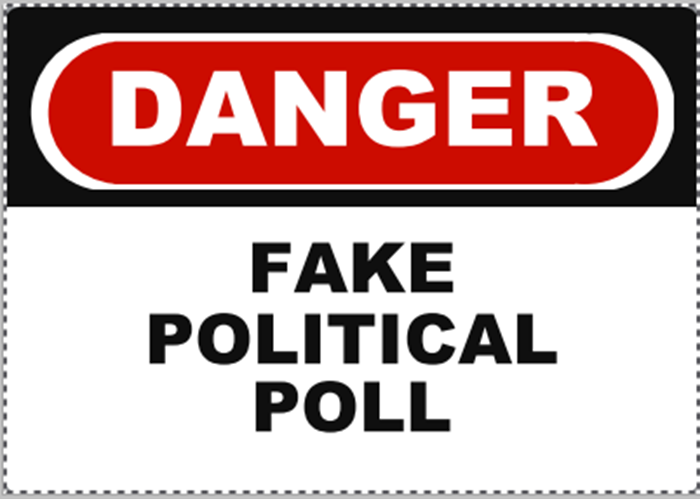Here we are, one day away from voting that will most probably result in some changes that will impact the United States and the World like never before. And we don’t have any idea who will win elections in all 50 states and Puerto Rico!
Just imagine how it would feel to be certain today of what the results will be tomorrow. And that feeling has resulted in dozens of polling agencies popping up through the years. Have you ever wondered why there are so many polling entities? There’s a simple answer to that question: $$$$$.
Our good friends at Real Clear Politics (RCP) started something today that they are giving to us all that might assist voters with who to trust when it comes to polling results. But can we trust this analysis by RCP? Their explanation gives us all that answer.
2020, 2018, 2016: President, Senate, Governor
The RCP Polling Accountability Initiative
Below is the initial launch of the RCP Polling Accountability Initiative pollster rankings. This initiative is designed to increase accountability and restore public trust in political and election polling. Pollsters have been ranked by accuracy according to the average absolute error of how close they were to the winning candidates’ actual vote margin.
We separated pollsters into two categories. Multi-state pollsters are those who have conducted polling across multiple states over the last few cycles. Single-state pollsters conduct surveys primarily in one state or region. These initial rankings include the major media and polling outlets that release polls nationwide and in their respective states. As this project progresses all pollsters that have been included in the RCP Averages will be assessed along with many firms that have not been included in the RCP Averages to date.
Each pollster’s final poll in the last 22 days of the election was evaluated. In this initial launch, the 2020 rankings include statewide polls for President and Senate in 17 battleground states. (Leans Dem, Leans GOP, Toss Up).
2020, 2018, and 2016 rankings include statewide presidential and Senate polls in battleground states for 2020 and 2016, as well as 18 statewide governor and 17 senate battleground races in 2018. In the coming days and weeks, we will continue expanding the pollster rankings to include 2022’s midterms, as well as a more comprehensive analysis of pollsters’ historical accuracy.

Summary
Our explanation of this process and subsequent polling reports prove one thing to us: Polls are little more than attempts to shape answers from voters by framing questions in certain ways. It’s safe to say that there are reasons pollsters will report different results in obtaining from the same or like-minded voters. So why would the polling results be so different? Read two sentences ago!
Notice by viewing the rankings of polling agencies listed above that their rankings are dramatically varied. Because of that, it’s really hard to find one to trust completely while ignoring the others. We at TruthNewsNetwork, Ltd. pick the top ten pollsters and use their results to determine the “probable” results of each of the election races they publish.
Polls have one thing in common with ALL of the other polls: they’re the consensus of questions asked to “People.” And all people have opinions!
As you plan to vote on Tuesday — if you haven’t already voted — maybe you want to look at the best pollster from the lists above and finalize your choices. Or maybe you just want to close your eyes and pick the candidates whose names come up first!
All of the answers have one thing in common: they’re someone’s personal opinion. And we all have one!

